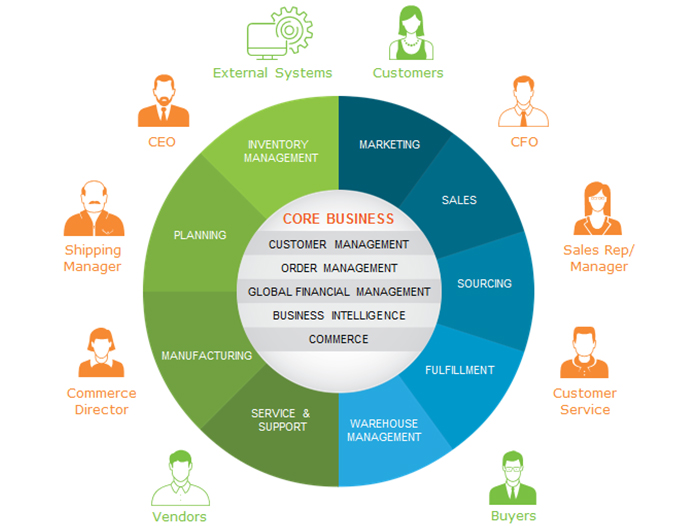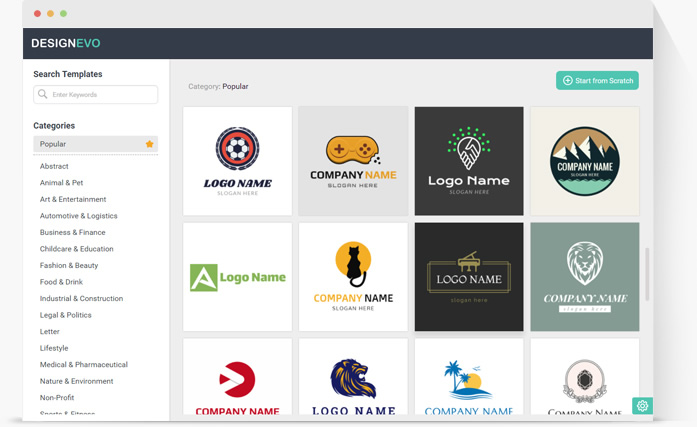Enterprise SaaS, or Enterprise Software as a Service, refers to a software delivery model where a company provides its software applications and services to other businesses on a subscription basis over the internet. In this model, the software is hosted in the cloud and accessed by customers over the internet, rather than being installed on individual on-premises servers or devices.
Enterprise SaaS has become increasingly popular among businesses of all sizes because it offers flexibility, cost-efficiency, and the ability to quickly adopt and scale software solutions without the burden of managing complex infrastructure. Common examples of Enterprise SaaS applications include customer relationship management (CRM) software, enterprise resource planning (ERP) systems, human resources management tools, and collaboration and communication platforms.
What is Enterprise SaaS?
Enterprise SaaS (Software as a Service) is a cloud-based software delivery model that provides businesses with access to applications and services over the internet. It has become increasingly popular in recent years due to its scalability, cost savings, and ease of use. With Enterprise SaaS, companies can quickly deploy new applications without having to purchase or maintain their own hardware or infrastructure.
Key Characteristics of Enterprise SaaS
Enterprise SaaS, or Enterprise Software as a Service, refers to a software delivery model in which a company provides software applications and services to other businesses over the internet. These software applications are hosted on cloud servers and are made accessible to customers on a subscription basis.
Key characteristics of Enterprise SaaS include:
- Subscription-Based: Instead of purchasing software licenses, customers pay a recurring subscription fee to access and use the software. This subscription model often includes ongoing updates, maintenance, and customer support.
- Cloud-Based: The software is hosted on remote servers in data centers, commonly referred to as the cloud. This eliminates the need for customers to install and maintain the software on their own servers or devices.
- Accessibility: Users can access the software from any internet-connected device, allowing for flexibility in terms of location and device type.
- Scalability: Enterprise SaaS solutions are typically scalable, meaning businesses can easily adjust the number of user licenses or the level of service based on their changing needs.
- Multi-Tenancy: SaaS providers often use a multi-tenant architecture, where multiple customers share the same software instance. However, security and data isolation mechanisms are in place to ensure the privacy and security of each customer’s data.
- Automatic Updates: SaaS providers are responsible for maintaining and updating the software. This ensures that customers always have access to the latest features and security patches without needing to manage the updates themselves.
- Collaboration and Integration: Many Enterprise SaaS applications are designed to facilitate collaboration and can often be integrated with other software systems used by the enterprise.
How Enterprises Benefit from SaaS
The modern enterprise is increasingly turning to Software as a Service (SaaS) solutions to meet their business needs. SaaS provides organizations with an array of benefits, including cost savings, scalability, rapid deployment, accessibility and mobility, automatic updates, and reduced IT burden.
-
Cost Savings
By using SaaS applications instead of traditional on-premises software solutions or hardware purchases for certain tasks such as customer relationship management (CRM), enterprises can save money in the long run. This is because they must pay for what they use; there are no upfront costs associated with purchasing licenses or servers that may not be used all the time.
Additionally, since many providers offer subscription plans based on usage levels rather than fixed fees per user/license/etc., businesses can save even more money by scaling up or down depending on their current needs without having to purchase additional resources each time something changes internally.
-
Scalability
With SaaS applications being hosted in the cloud rather than locally installed programs running off physical machines within your organization’s network infrastructure it makes them much easier to scale up when needed without needing any additional hardware investments from your side – simply increase your usage plan according to how much you need at any given moment!
This also allows businesses greater flexibility if workloads fluctuate over time, so you do not get stuck paying extra every month just because one team has been busier than normal recently but then suddenly slows down again shortly thereafter – perfect for companies who often experience seasonal highs & lows throughout different parts of their year!
-
Rapid Deployment
Since most SaaS solutions are available via web browsers or mobile apps these days it means deployments happen instantly once purchased – no waiting around weeks while someone sets everything up manually like before which was both costly & inefficient too!
In addition, this also reduces downtime significantly should anything go wrong during installation due its quick recovery times from backups stored securely online meaning users will not suffer from lengthy outages either which could potentially cause problems further downstream later.
-
Accessibility and Mobility
As mentioned previously many popular services now come pre-packaged into browser extensions / mobile apps making them accessible anywhere anytime provided there is an internet connection present – great news if staff need access outside office hours e.g., working remotely etc.
Furthermore, this type of setup ensures data remains secure regardless of where it accessed from, thanks to its encryption protocols protecting against malicious attacks etc.
-
Reduced IT Burden
With SaaS, businesses no longer need to manage hardware or software in house as all services are hosted in the cloud by a third-party provider. This reduces IT burden significantly and frees up resources that can be used elsewhere within the business for more strategic purposes such as innovation or customer service initiatives.
-
Predictable Costs
As most providers charge on a subscription basis, this means there is less risk involved when budgeting for technology solutions due to predictable monthly payments rather than large one-off investments with traditional software licenses which may not offer value over time if requirements change quickly.
-
Customization & Flexibility
Many enterprise level applications now come with built -in customization options, allowing organizations greater flexibility when configuring systems according to specific needs without having any impact on performance. Furthermore, updates can often be applied automatically so users always have access to the latest version available without needing manual intervention from internal teams.
-
Integration Capabilities
The ability integrate multiple systems together is essential in today’s digital world where data must flow freely between different departments and locations across an organization’s network landscape.
Something made much easier via cloud-based platforms like those offered through SaaS solutions which provide robust APIs designed specifically for integration purposes along with prebuilt connectors between popular applications such as Salesforce® or Microsoft Dynamics 365 ® etc.
Additionally, many providers also offer support should customers require assistance setting up these connections correctly.
-
Security & Compliance
One of the most important benefits offered by SaaS solutions is enhanced security measures which help protect sensitive data from malicious attacks or unauthorized access.
Most software as a service providers offer advanced encryption protocols, two-factor authentication systems, firewalls, secure networks with dedicated IP addresses etc., ensuring your enterprise’s data always remains safe.
Additionally, these services also provide regular updates, so you do not have worry about staying up-to date with latest security patches or industry regulations like GDPR/HIPAA etc., allowing you peace of mind knowing that your business is always compliant with applicable laws & regulations!
-
Focus On Core Competencies
With cloud-based applications taking care of mundane tasks such as storage management and maintenance related activities, enterprises can now focus more on their core competencies instead of wasting time trying to manage IT infrastructure.
The scalability provided by cloud computing allows businesses to quickly scale up operations whenever needed without having to purchase additional hardware or hire extra personnel.
As well this helps reduce operational costs significantly since it eliminates need for expensive upfront investments in physical servers/data centers making it easier budgeting purposes too!
-
Global Reach
Another great advantage offered by SaaS platforms – global reach! By using cloud-based software companies no longer limit geographical boundaries enabling them to expand into new markets faster than ever before while still maintaining high levels of quality control over products being delivered to customers worldwide!
Additionally, this also makes collaboration between teams much simpler since everyone has same access tools regardless of where they located; thereby improving communication across departments within organization leading better decision-making processes overall!
Examples of enterprise SaaS
SaaS provides organizations with cloud-based applications that are accessible from anywhere and can be used to automate processes, streamline operations, improve customer service and more. Let us explore some examples of enterprise SaaS solutions that can help you take your business to the next level.
-
Customer Relationship Management (CRM)
CRM software is designed to help businesses manage their relationships with customers and prospects by automating tasks such as lead generation, contact management and sales tracking.
Popular examples include,
- Salesforce CRM
- Microsoft Dynamics 365
-
Enterprise Resource Planning (ERP)
ERP systems provide companies with an integrated view of their entire organization to better manage resources across departments like finance/accounting, HR/payrolls inventory control etc., making it easier for them make decisions based on real data insights rather than guesswork.
Popular ERPs include,
- Oracle NetSuite Cloud Suite
- SAP Business
- ByDesign
- Sage Intacct Financials
-
Human Capital Management (HCM)
HCM solutions are designed specifically for managing employee information such as salaries payroll taxes benefits attendance records training performance reviews recruitment onboarding etc., reducing manual paperwork while providing employees access to self-serve tools where they can track progress review documents submit requests update personal data online etc.
Examples include,
- Workday Human Capital Management
- BambooHR Talent Platform
-
Collaboration Tools
These tools allow teams within an organization collaborate effectively in real time regardless of location through features like file sharing document editing chat messaging video conferencing project management workflow automation task tracking issue resolution whiteboarding virtual brainstorming sessions team calendars et cetera.
Leading collaboration platforms include,
- Slack
- Microsoft Teams
- Asana
- Trello
- Quip
- Jira
- Confluence
- Google G Suite
Challenges of Enterprise SaaS
As businesses continue to embrace the cloud-based services offered by enterprise SaaS (Software as a Service) providers, there are several key challenges they must be aware of. From data security concerns to integration complexities, vendor lock-in and compliance and regulatory issues, understanding these potential pitfalls is essential for successful adoption of SaaS solutions.
-
Data Security Concerns
As with any technology solution that stores sensitive customer or business data in the cloud, organizations need to ensure their provider offers robust security measures such as multi-factor authentication and encryption protocols. Additionally, it is important that they have an effective disaster recovery plan in place should something go wrong with the system or service itself.
-
Integration Complexities
Enterprise software solutions can often require complex integrations between different systems within an organization’s IT infrastructure – this could include everything from databases through to applications like CRM tools or analytics programs. It is critical that businesses understand how these components will interact before signing up for a particular service, so they don’t encounter any costly surprises further down the line when trying to integrate them together post purchase!
-
Vendor Lock-In
One major challenge associated with enterprise SaaS is vendor lock-in – this refers to being tied into one specific provider due either contractual obligations or technical incompatibilities if switching vendors were attempted at some point later down the line. To avoid getting ‘locked in’ its important companies do their research beforehand; ensuring compatibility across all relevant platforms prior to committing financially would be wise!
-
Compliance & Regulatory Issues
Lastly but certainly not least comes compliance & regulatory issues – depending on what industry sector you are operating within there may well be certain laws which govern how your company handles customer/business data; failure adhere could lead hefty fines imposed upon those responsible – making sure you understand exactly what’s required here before going ahead is essential!
Conclusion
Enterprise SaaS has become an invaluable tool for organizations looking to streamline and optimize their processes. From automating mundane tasks and improving customer service to providing access to real-time analytics, enterprise SaaS offers a wide range of benefits that can help companies remain competitive in the modern marketplace.
By leveraging these enterprise SaaS solutions companies have been able reduce operational costs increase efficiency gain competitive advantage strengthen customer relationships boost productivity enhance employee engagement foster innovation scale up faster than ever before so if you are looking at taking your business forward investing into one or more enterprise SaaS products may just be what you need.
All things considered, investing in Software as A Service solution provides numerous advantages for any size business looking maximize its productivity while minimizing costs associated traditional IT infrastructures. From improved security compliance measures increased flexibility focusing core competences global reach; there plenty reasons why should seriously consider switching SaaS platform today!




